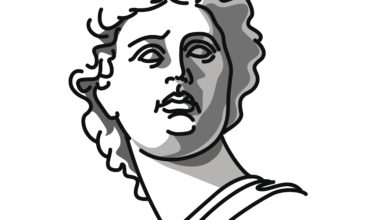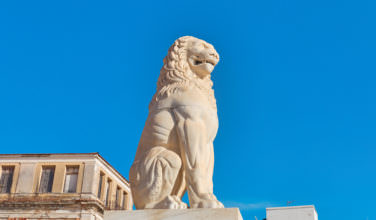The Muses of Greek Mythology
Comments Off on The Muses of Greek Mythology

According to Greek Mythology, artists have a Muse who whispers inspiration into their ears. Without the Muse, the artist wouldn’t be able to create. The Muse is said to help writers, musicians, painters, sculptors, and other creative people. Without the Muse, inspiration wouldn’t exist.
Today, we think of the “Muse” as simply a synonym for “inspiration”. To the Ancient Greeks, however, it was much more than that. The Muses were the goddesses of inspiration for the arts, sciences, and literature. There is some debate how many muses there really were.
Origin of the Muses
The Muses were the daughters of Zeus, the King of the Gods, and Mnemosyne, the Titan goddess of memory. Zeus tricked Mnemosyne by disguising himself as a shepherd. In one version, they lay together for nine nights. Each night, a different Muse was conceived. In some versions, there were only three Muses.
In this instance, Mnemosyne and Zeus were together only three nights. According to the poetry of Sappho, there was a tenth Muse. Historians argue as to why there was such a variation in the number of Muses.
Who They Were
Each Muse represented different aspects of intellect, thought, and creativity. They were also associated with a certain tool. Here is an overview of who they were and what they represented, according to Hesiod.
- Calliope was the Muse who represented epic poetry. Her implement was the writing tablet.
- Clio was the Muse who had to do with history and she was always associated with holding a scroll.
- Euterpe was the Muse of lyrical poetry and music, and is always shown with an aulos (flute).
- Thalia represented both comedy and pastoral poetry and she was associated with the comic mask.
- Melpomene was the Muse of tragedy and her item was the tragic mask.
- Terpsichore was the Muse of dance and she was always associated with the lyre.
- Erato was always associated with love poetry. She had a type of lyre called the cithara.
- Polyhymnia represented sacred poetry and she was always depicted with a veil.
- Urania was the Muse of astronomy and she had a globe and compass.
In the versions where only three Muses existed, these were Melete, who represented “practice”, Mneme, who represented “memory”, and Aoide, who was the Muse of “song”. However, the most accepted version is that there were Nine Muses with each representing a specific discipline.
The Muses were also worshiped extensively, especially in areas where art and intellect were highly valued, such as at the library at Alexandria.
Legacy of the Muses
The Muses were often mentioned in poetry and literature. Homer, Dante, Virgil, Catullus, Chaucer, Milton and Shakespeare all mention them in their literary works. As you can see, unlike other gods and goddesses, the legacy of the Muses is still felt today.
Artists and writers alike often see the source of their art as being divinely inspired. Today, the word “muse” either means “to ponder” or it refers to “someone who creates poetry”. One thing is certain; Wherever there is creativity and art, there will always be those who create it, regardless of whether or not they believe the Muses are real.
Categorized in: Greek Mythology
This post was written by Greek Boston





